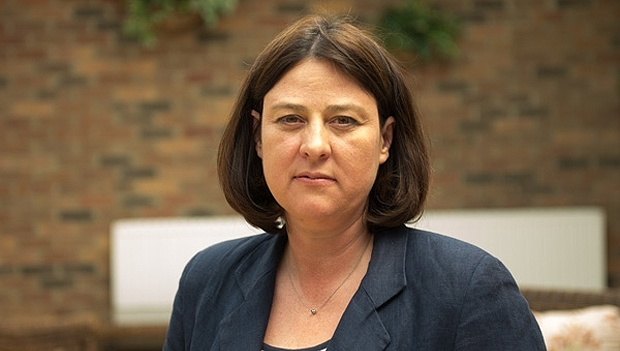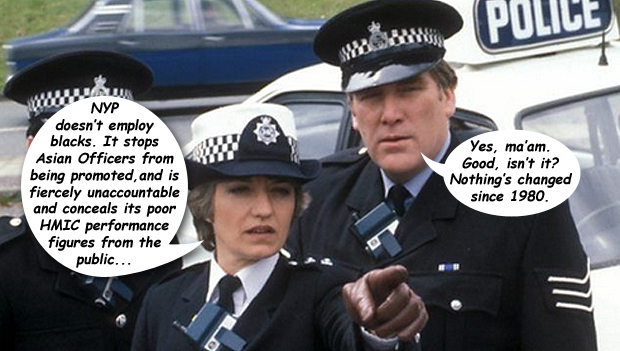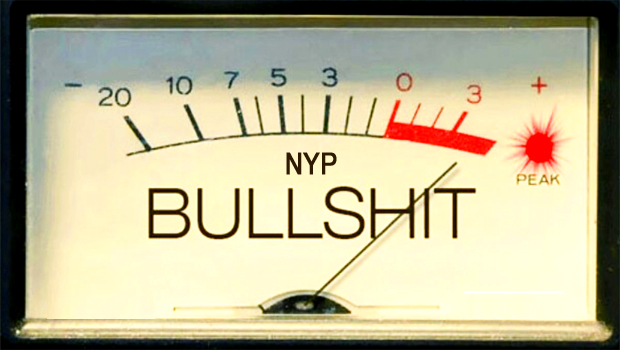‘Bravo Sierra’ at NYP HQ
by TIM HICKS
Introduction
This article concerns the recent Public Accountability Meeting held by Police & Crime Commissioner (PCC) for North Yorkshire (PCCNY) Julia Mulligan, at North Yorkshire Police (NYP) Force Headquarters at Alverton Court, North Allerton. This is actually a very important meeting because according to PCC Mulligan’s website:
“Scrutinising the performance of North Yorkshire Police is a core function” of the Police and Crime Commissioner. This is in accordance with PCC Mulligan’s duty contained in her oath of office, to “take all steps within my power to ensure transparency of my decisions, so that I may be properly held to account by the public.”
There was considerable soul searching over the title for this article.
Initially it was to be entitled “B— S— at NYP Headquarters”, but I felt the NYE, being a quality publication, could not stoop to profanity in an article. Then it was to be “BS at NYP Headquarters”, but that wasn’t catchy enough. Eventually I settled on “Bravo Sierra at NYP Headquarters” being a play on the title of a TV Series “Juliet Bravo”, which ran from 1980 – 1985. It depicted a female police inspector whose radio call sign was Juliet Bravo, leading a group of male officers in a fictional town in Lancashire in 1980.
NYP Annual PEEL Assessment shows serious decline in NYP performance
I have recently run a series of articles on the disastrous performance of North Yorkshire Police in the HM Inspectorate of Constabulary Fire and Rescue Services (HMICFRS) PEEL (Police Effectiveness, Efficiency and Legitimacy) Assessments for 2017. The PEEL assessments consist of eleven questions across three “Pillars” of policing:
- Effectiveness
- Efficiency
- Legitimacy
This culminates in the three individual pillars being amalgamated into the 2017 Annual PEEL Assessment.
In addition, NYP underwent a HMICFRS Crime Data Integrity Inspection in 2017, which was a disaster. The force received an inadequate rating. To quote HMICFRS:
“As it stands today, we estimate almost 1 in 5 crimes in North Yorkshire are not properly recorded. This is simply inexcusable.”
I revealed exclusively in the NYE that there has been a serious decline in performance in North Yorkshire Police since 2016.
- In 2016, only one of the ten PEEL questions was rated “Requires Improvement” and the force was rated “Good” in all three pillars.
- In 2017, five of the ten PEEL questions was rated “Requires Improvement” and the force was rated “Requires Improvement” in one of the three pillars.
- The NYP CDI inspection (Report here) was completed two months after the inspection was completed, so the impact was not included in the 2017 PEEL Effectiveness Report. Had it been then the “Preventing crime and tackling anti-social behaviour” question would have been downgraded from “Good” to “Inadequate”. This would have graded six out of eleven categories where the performance of NYP was below standard. The overall performance of the force for 2017 would probably have been downgraded from “Good” to “Requires Improvement”.

Police and Crime Commissioner for North Yorkshire Julia Mulligan
This is a matter for serious concern. Yet there is no mention of this in the Police & Crime Commissioner for North Yorkshire’s website or the NYP website.
Questioning PCC Mulligan at the Public Accountability Meeting
Being concerned at this omission and taking the PCC at her word, I decided to put three questions to her for the Public Accountability Meeting held on the 24th of April 2018.
I settled down to watch, secure in the knowledge and hope that the PCC would discuss why NYP was assessed as “Inadequate” in more than half of the categories in the PEEL Annual Assessment. Commendably, the meeting is open to the public to view and the video is below.
You can use this photo sheet to identify who is speaking.
My first impression was unfavourable. I was immediately struck by the informal appearance of many of the delegates. This is a very important formal meeting and is the equivalent of a civilian Board meeting. It is where the PCC holds NYP to account and scrutinises its performance. It is held publicly live via video. Yet the three serving police officers present were not wearing tunics, shirts and ties, they were in working dress, or civilian clothes. The PCCNY Policy and Scrutiny Manager Mr Thomas Thorp did not even wear a suit. This indicates a certain lack of formality, credibility and interest in the proceedings.
PCC Mulligan’s response to my questions can be seen on the video recording between 2:10 and 4:20.
I watched the entire meeting and at the end of it I was dissatisfied with the PCC Mulligan’s response – or lack of it – to my questions. So I wrote to her raising the reasons for my dissatisfaction and asking for an answer.
I had a prompt and courteous response from Mr Thorp, which is summarised below against each question.
Classic PCC Mulligan: Questions, but no answers
Question 1: What is the Police and Crime Commissioner’s response to the fact that the PEEL Annual Assessment for 2017 shows a marked decrease in performance by North Yorkshire Police compared to 2015 and 2016?
PCC Mulligan’s response in the meeting: PCC Mulligan stated that the HMICFRS PEEL annual assessment simply amalgamates the three individual assessments into one assessment and there is nothing new there.
I was dissatisfied with this response because PCC Mulligan’s statement is factually incorrect.
In addition to recording the three individual reports (Efficiency, Effectiveness and Legitimacy), the PEEL annual assessment additionally gives an overall assessment of the force which is missing from the three individual reports. This can then be compared to the prior year’s reports to identify overall trends. PCC Mulligan has not provided any comment on “the fact that the PEEL Annual Assessment for 2017 shows a marked decrease in performance by North Yorkshire Police compared to 2015 and 2016.” In short PCC Mulligan has very skilfully evaded answering this key question.
Question 2: Why has the 2017 PEEL Annual Assessment not been commented on in the North Yorkshire Police website or the Police and Crime Commissioner’s website?
PCC Mulligan’s response in the meeting: Mrs Mulligan commented that all of her comments are on the North Yorkshire Police and Police and Crime Commissioner’s website.
I was dissatisfied with this response because PCC Mulligan’s comments relate only to the individual Efficiency, Legitimacy and Effectiveness pillars. The fact that there has been a serious decline in performance overall can only be discerned by looking at the PEEL Annual Assessment, not the individual pillar reports. That is why it is so important that the PCC comments on it.
Mr Thorp’s response on behalf of Mrs Mulligan is below in italics and indented:
“With regard to your first and second questions, I am afraid that we will have to agree to disagree on this matter. HMICFRS conduct their annual PEEL (Police Effectiveness, Efficiency and Legitimacy) inspections over the course of the year. They bring these, and other inspection reports from that year, together on one webpage which is updated throughout the year as the reports are published. At the end of the year they are, therefore, all available in one place and a media statement is released to that effect. The information, however, is no different to what is in the individual reports, and there is no new grade applied, or new comment given.
The information you have provided is the information available in each report. In commenting on each report, and as she reiterated in the meeting, the PCC has reflected on the findings, compared the current report to previous, and outlined where improvement should be made, referencing other inspection reports where appropriate. She has also given substantial reports to the Police and Crime Panel on these inspections and the improvements that are being made.”
This is factually incorrect. Only the PEEL Annual assessment gives an overall assessment of the performance of North Yorkshire Police and allows overall performance to be assessed against prior years and against other forces. The Annual PEEL Assessment is not shown anywhere on any website and has not been commented on at all by anyone.
“We have not previously commented on the three reports together. We did indeed republish the link to the webpage last year, and will be doing so again this year and I am following up on why it hasn’t been published yet. However, you will see that there was no comment from the PCC on this last year as the comments on the individual reports stood. She will not be making any further comment on the 2017/18 round of inspections.”
This is correct. However, by not commenting on the overall trend which is contained only in the Annual PEEL Assessment, PCC Mulligan is evading acknowledging the fact that the overall Annual PEEL Assessment coupled with the results of the HMICFRS CDI Inspection reveals a serious decline in performance in NYP, which has not been released to the public, although the PCC has a duty to do so. It is, in short, being concealed.
Question 3: Does the Police and Crime Commissioner acknowledge that her statement that the failures identified in the HMICFRS CDI Inspection related to recording and did not impact victims was wrong.
During the meeting PCC Mulligan stated she was not sure what the question was all about.
Clearly that is not answering the question. PCC Mulligan was obfuscating the question.
PCC Mulligan must know what the question is about. To be clear:
In response to the HMICFRS CDI report, PCC Mulligan stated:
“On the more positive side, the report does state clearly that the service to victims was not impacted, with officers attending and responding as needed. This is principally therefore a recording issue, as opposed to a failure in providing a service to victims.”
What the HMICFRS report actually says about the failures in service to victims is this:
- ….too many offences continue to go unrecorded and therefore not investigated properly. The force is potentially depriving victims of the services and justice to which they are entitled.
- In the crimes not recorded, HMICFRS found that safeguarding requirements had been considered in most of these cases but that around half of these were not investigated.
- Although some victims may be referred to support agencies in other ways, the delay in recording a reported crime also delays the referral of the victim to Supporting Victims. As some victims would benefit from the early support this service can provide, these delays are unacceptable.
- A victim should always be informed of the status of his or her reported crime when a crime has been cancelled or transferred to another force for investigation. In the case of a decision to cancel a recorded crime, the very least the victim should expect is an explanation of the reason for this decision. We found that of the 53 victims who should have been informed of the transfer or cancellation, 41 had been told.
- Delays in recording of a reported crime are, in some cases, leading to delays in the referral of victims to the force’s victim support service Supporting Victims, letting down those victims who need the early support this service can provide.
- The recording of a report of rape is important. Victims generally require significant support from the outset and any delay in providing support can harm both the recovery of the victim and any investigation.
- The investigation found that in three of the rapes not recorded, adequate safeguarding was not put in place and two of them were not sufficiently investigated. In one of these cases the crime was not recorded because the victim was suffering from mental health issues and officers did not properly understand how to deal with her ability to consent. She subsequently reported being victim to the same offender on a second occasion and NYP is now investigating these matters.
Victims of violent crime and, in particular, victims of more serious violence, often require substantial support. This support should come not only from the reporting and investigating officers, but from other appropriate agencies, such as Supporting Victims – the NYP in-house team which supports victims of crime. In these circumstances, crime-recording is even more important because failing to record a violent crime may mean that Supporting Victims is not notified that a person has become a victim of violent crime and so cannot offer victims the support they need and deserve.
In response to PCC Mulligan’s comments, HMICFRS released this statement to the NYE directly contradicting her:
An HM Inspectorate of Constabulary and Fire & Rescue spokesperson said:
“Throughout our inspection programme we have found occasions where crimes are not correctly recorded, but forces do indeed offer support to victims. However, if a report of crime has not been correctly recorded, we have also found some victims not getting the service they deserve. This is both in terms of the support available to them, and the closure from the offender not being brought to justice.”
“This is not simply an administrative exercise: it is vitally important that victims receive the service they deserve and that forces have a complete picture of the nature of criminality in their communities. Without that, they cannot support the public, and plan how to use their resources accordingly. As part of this programme, we carry out unannounced revisits of forces, in order to inform the public on the progress made against our recommendations.”
Mr Thorp commented:
“In regard to your third question, this was covered at length in the meeting. Please see https://www.northyorkshire-pcc.gov.uk/police-oversight/governance/governance-process/corporate-scrutiny-board/public-accountability-meeting-24-april-2018-crime-recording/. If you watch the video I would refer you to 12.15-14.00 (where I refer to one of your concerns at 13.18), 24.55-26.30, and the 20 minutes from 46.45 where your question is referred back to explicitly, 48.40 in particular, where this matter is dwelt on in considerable detail. As I am sure you will appreciate from the hour and a half spent on this topic, it is highly complex, but I hope this information will assure you that, as the PCC said, victims have not been let down in these cases. If you do not agree still, then we will, I am afraid, again have to agree to disagree.”
These were general discussions that were not specific to my question. Having requested questions, PCC Mulligan should have answered them in the section of the agenda they were scheduled for at 2.10 – 4.20 in the meeting.
At no point in the meeting does PCC Mulligan address the point that her comments are contradicted by HMICFRS.
Failure to respond to correspondence
In the meeting, PCC Mulligan stated that she had responded to all of my correspondence, but I should write in and specify and correspondence that I felt was outstanding. I did this and Mr Thorp wrote back conceding that some of my correspondence was outstanding; thereby confirming that PCC Mulligan’s comments at the meeting were inaccurate. She simply issued a blanket denial of a valid complaint.
Summary: Overall performance of NYP
In 2016, HMICFRS was rated NYP as “Requires Improvement” in only one category. In my opinion this was an acceptable performance level.
In 2017, NYP was rated “Requires Improvement” in five categories and if the CDI inspection had been included, six out of eleven categories would have been rated “Requires Improvement” or “Inadequate”. The overall performance of NYP would have been downgraded from “Good” to “Inadequate”. In my opinion this is an unacceptable performance level.
The HMICFRS Annual PEEL Assessment is the equivalent of the annual audit for a company. It is the standard by which each police force is judged. The major decline on the performance of North Yorkshire Police over last year should be the no 1 issue for the NYP Senior Command Team and for the Police and Crime Commissioner. Yet there is no mention of this in the Police & Crime Commissioner for North Yorkshire’s website or the NYP website. Nowhere is the issue addressed by any of the great and good present at the meeting; PCC Mulligan did not even question the Chief Constable over this decline.
It has been ignored and very skilfully swept under the carpet.
I am reminded of the words of former Detective Superintendent Stephen Fulcher quoted from his book “To Catch a Serial Killer”:
“To my mind the most senior echelons in policing today weren’t police officers at all, they were merely puppets blowing with the prevailing political wind. The saying goes that there are lies, damn lies and police statistics, and in our modern-day performance-measurement mind-set you could do quite well for yourself if you played the game”.
By refusing to acknowledge the overall PEEL Annual Assessment, the so-called “Public Accountability Meeting” has evaded facing up to the fact that there has been a serious decline in performance in North Yorkshire Police. To summarise the meeting:
- NYP management were not being held accountable by PCC Mulligan or the Policy and Scrutiny Manager Thomas Thorp, for what is clearly a major decline in operational policing performance.
- Public questions are being very skilfully evaded and/or ignored.
- Criticism of the performance of the PCC’s office was met with a blanket denial, when in fact it was accurate.
- Information which the public has a right to know was supressed, not just at the meeting, but in the statements put out on the NYP and PCC’s websites. Apparently as a coordinated act of policy.
In short, the “Public Accountability Meeting” did not hold the police accountable at all. It appears to be Bravo Sierra (B— S—) and a PR opportunity for the PCC.
Because it has not been released on the NYP and PCCNY websites, this issue has not been picked up and then covered by the local media. The only organisation that has publicised this issue and held NYP to account is the NYE.
Readers will no doubt ask what is the point of paying thousands of pounds in salaries to a Police and Crime Commissioner and a Policy and Scrutiny Manager, who do not hold the police to account or scrutinise them.
“Threat & Retaliation”
Following on from the remarks of former NYP Chief Superintendent, former Scarborough Mayor and Scarborough Borough Councillor Tom Fox in full Council, that the NYE should expect to be subjected to “Threat and Retaliation”. My article revealing exclusively that the HMIC PEEL Annual Assessment and the CDI Inspection had a serious decline in NYP performance generated some fan mail from NYP Head Quarters.
The article (here) went out on the 16th of April 2018. The next day the Chief Constable’s Staff Officer Inspector Alex Butterfield wrote to me on NYP headed paper advising me that “North Yorkshire Police will not respond to requests which relate to any enquiries you make regarding any journalistic enquiries”.
Hmmm…..… did my article hit a nerve at NYP HQ?
Initially, I was annoyed by this, but then I cheered up. Looking at things positively, I was very flattered. This is proof positive that our many readers include the North Yorkshire Police Command Team; that they pay attention to what we write and respond quickly to our articles.
The final word
I will leave the final word on Bravo Sierra at NYP HQ, to the fictional cast of Juliet Bravo:




























Comments are closed.